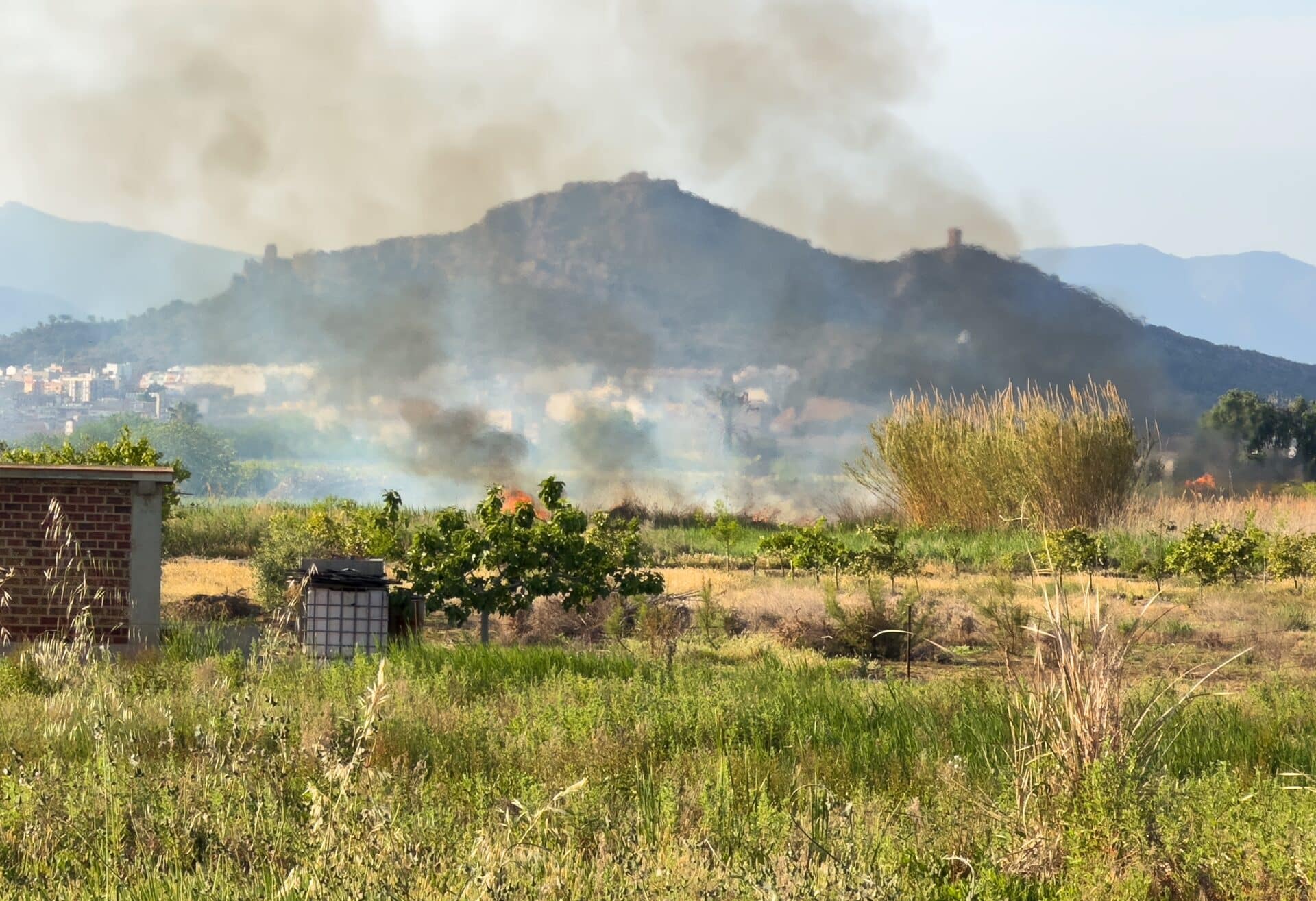As the summer season comes to a close, you may be completing your final harvest or gearing up for fall crop rotation. However, in Southern California, there should be another crucial item at the top of your to-do list: prepping for the Santa Ana winds.
With gusts reaching 90 mph, the Santa Ana winds peak from September to November. These strong gales can cause significant property damage, so it’s important to understand their origins and timing to safeguard your land.
Keep reading for our practical tips and tricks on preparing your rural property for the Santa Ana wind season.
Santa Ana Winds: Timing and Intensity in Southern California
Originating in the Great Basin (the area between the Rocky Mountains and the Sierra Nevada), the Santa Ana winds are caused when high-pressure air moves into the low-pressure region of coastal California. Santa Ana winds are most common in the fall and winter months, when gusts can range anywhere between 30 and 100 mph. The resulting windstorms can last for several days, with double-digit wind speeds pummeling property and endangering residents.
Santa Ana winds have many potential impacts on rural properties in Southern California, from fallen trees to livestock injury. Plus, the hot, dry air increases the risk of wildfires.
Preparing Your Property for Santa Ana Wind Season
While Santa Ana winds can pose significant challenges on your rural land, with these proactive safety measures, you’ll be better equipped to mitigate hazards. Let’s go through some everyday strategies to protect your acreage during the windy season.
Routine Tree Care and Maintenance for Wind Resistance
Thorough tree care will help avoid severe damage from fallen trees or loose limbs down the line. To maximize safety and wind resistance, pay particular attention to:
- Root care – Roots should not be cut, smothered, or over-buried. Healthy roots will help a tree stay supported during a windstorm.
- Pruning – Routinely trim loose, broken, or damaged branches. Dead or diseased trees should be cut down entirely.
- Group planting – Trees planted in a group (5 or more trees) are more stable and thus less likely to be blown over.
Consistent tree maintenance will set your land up for success during the windy season.
Effective Debris Management
Clearing debris before the windy season has two major benefits. First, these loose materials won’t become dangerous projectiles during a storm. Second, removing flammable vegetation helps mitigate wildfire risk.
Everyday debris management includes:
- Hay
- Straw
- Mulch
- Manure
- Compost
- Grass clippings
- Tree branches
Not only will your land be safer, but it will look more tidy, too.
Fire Prevention Strategies
Extremely dry air plus strong hot winds are a recipe for wildfires. Plus, natural debris on your property will only fuel the flames. In windy conditions, a small spark can quickly cause a raging fire.
As we mentioned, a crucial first step is removing all vegetation that could act as fuel and other debris. Once you clean up your property, ensure that flammable materials are not stored near machinery, electrical equipment, or other heat sources. If you use hay, regularly monitor its temperature and unstack hot bales to promote airflow.
Plus, don’t forget to always have a fire extinguisher and hose in case of emergency.
Strengthening Structures Against High Wind Speeds
Even if your property can withstand typical storm conditions, it may be no match for the force of Santa Ana winds.
The first step is removing any natural debris or loose items that could launch into your home or barn. This includes tree clippings, outdoor furniture, farm equipment, and more. Next, strengthen your structures to maximize stability and wind resistance. Sturdier connections include:
- Bolts (not nails)
- Roof fasteners
- X or V corner bracing
- Diagonal roof bracing
Reinforcing your home, barn, shed, and other structures with these methods will help keep your property safe.
Essential Steps for Protecting Livestock and Equipment
Sound structures are the first way to shelter both livestock and equipment from severe wind. A well-built barn offers necessary protection during a windstorm, and it should be stocked with all the essentials for at least several days. Store farm equipment in separate sheds or barns to make sure it doesn’t become damaged or, worse, inflict injury.
In the event of extreme weather, your animals rely on you to stay safe. Before Santa Ana wind season, create an evacuation plan for both you and your livestock.
Head to Land.com for More Resources
All rural property comes with unique challenges, and despite the Santa Ana winds, Southern California is a beautiful, flourishing region. If you’d like to expand your acreage or purchase a new parcel, look no further than Land.com, the nation’s leading network for rural real estate.
From homesteads to farmland, browse farms and other listings for sale to find your dream property. To get started, connect with a land professional today for expert broker services in your area.
Sources:
Farmer’s Almanac. What Are The Santa Ana Winds? https://www.farmersalmanac.com/what-are-the-santa-ana-winds.
Arbor Day Foundation. How to Make Trees Storm Resistant. https://www.oregon.gov/odf/Documents/forestbenefits/tree-city-usa-bulletin-75-how-to-make-trees-storm-resilient.pdf.
University of Connecticut. Reducing Storm Damage to Your Barn. https://publications.extension.uconn.edu/publication/reducing-storm-damage-to-your-barn/.
Rutgers University. Fire Prevention and Safety Measures Around the Farm. https://esc.rutgers.edu/fact_sheet/fire-prevention-and-safety-measures-around-the-farm/.
